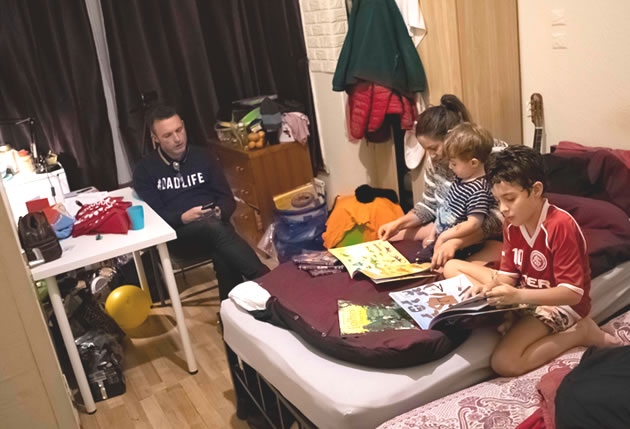Temporary Accommodation Costs More than Double in a Decade
Council spending just under £30 million a year

The borough has 1,457 households in temporary accommodation. Picture: Shelter
July 29, 2024
Hammersmith & Fulham Council’s spend on temporary accommodation has more than doubled in under a decade, as a local charity head warns of ‘record levels’ of homelessness across the capital.
Data revealed via a Freedom of Information (FoI) request indicates Hammersmith and Fulham spent just under £30 million on temporary accommodation in 2023/24, a significant jump on the £13.7m in 2014/15.
The council is also allocating more of its overall budget to cover such costs, rising from 1.81 per cent of its total pot in 2014/15 to just over four per cent last year.
A spokesperson for Hammersmith and Fulham Council said years of austerity plus a freeze on the local housing allowance since 2011 had forced authorities to rely on “high-cost accommodation solutions”, though that it is taking action by ensuring 3,000 housing units are built or underway over the next few years.
Councils across London, and the UK, have seen temporary accommodation costs rocket over the last decade. In Westminster, recent data showed how spending had increased by £34m between 2022/23 and 2023/24 alone, a rise of 55 per cent, to a total of £95m.
In February, London Councils, the body representing the city’s local authorities, revealed that boroughs are spending £90m a month on homeless accommodation, a 40 per cent hike on the year before.
The Local Democracy Reporting Service (LDRS) has spoken to people in temporary accommodation across the capital, including those placed by Hammersmith and Fulham. The LDRS has also previously reported on families having to be moved as far away as Manchester, due to a lack of West London homes.
According to the data provided to the LDRS, Hammersmith and Fulham Council’s spend increased from £13.7m in 2014/15 to just over £20m in 2017/18. It fluctuated between roughly £19m and £21m until 2023/24 when it shot from £21.4m to £28.9m, subject to audit, a jump of 35 per cent.
In its response to the FoI, the council said local authorities have increasingly depended on the private sector, primarily involving leasing from landlords. In the last three to five years in particular, there has been a noticeable decline in affordable private rental properties, they added, coupled with significant rent increases.
“This has resulted in a substantial shortage of available affordable housing. The diminishing supply has led to a marked increase in the reliance on short-term temporary accommodation, including costly nightly stays,” they said.
Rebecca Purchase, Regional Head for St Mungo’s Hammersmith and Fulham and Hounslow, said the charity has seen homelessness rising ‘exponentially’ in recent years across London and the country, “with record numbers of people sleeping on the streets, living in temporary accommodation as well as record numbers of households homeless or at risk of homelessness.”
She added, “We work closely with many councils in our areas of operation to combat this, including in Hammersmith and Fulham. We at St Mungo’s see an opportunity for our new Government to take swift action. We need to see solid plans to ensure that we can prevent homelessness through more affordable and appropriate housing and funding extended to help those currently experiencing homelessness.”
A Hammersmith and Fulham Council spokesperson said, “After 14 years of grinding austerity – including a Government failure to invest in and build social housing – councils across London are spending a significant amount of their budgets on temporary accommodation. This has been compounded by the cap on local housing allowance to pay for temporary accommodation frozen since 2011, forcing local authorities to rely on high-cost accommodation solutions.
“We need to address this to find suitable and affordable private rentals for people and families in long-term temporary accommodation, with decent living standards and greater powers to enforce this. We are taking action to address this shortfall in social housing by ensuring more than 3,000 homes are built or underway over the next few years.”
A paper prepared for the council’s Housing and Homelessness Policy and Accountability Committee earlier this week detailed how the local authority has 1,457 households in temporary accommodation, of which 99 new placements have been made since 1 April.
It added demand has increased over the last three years, with an average of 280 households approaching the homelessness service each month.
Ben Lynch - Local Democracy Reporter